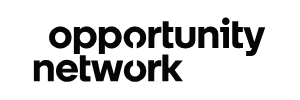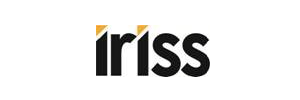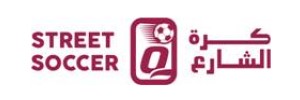Financial Structuring Qatar
An introduction to Financial Structuring Qatar
The impact that the financial standing has on the operations of a business or project cannot be over-emphasized. The success of any part of the business or project depends on the financial assets and the methodologies employed in accumulating, organizing and structuring them. As a result, financial structuring defines how organizations source their funds to facilitate the operations. These funds are mainly sourced from equity and debt in different forms such as short-term, mid-term and long-term.
The differences between the Financial Structure and a Capital Structure
It is important to note that a capital structure is part of the financial structure (and in turn Financial Structuring Qatar). A capital structure comprises the long-term sources of financing (including long term borrowings, retained earnings, equity, preference capital and debentures like bonds). The financial structure (and in turn Financial Structuring Qatar), on the other hand, comprises the short-term and long-term sources of funding (including the capital structure, short-term borrowings and accounts payable).
The differences for private and public organizations in Financial Structuring Qatar
These sources of financing or funding – debt and equity – are garnered in very different ways with respect to the type of an organization. Usually, we differentiate between public or private organizations based on the ownership – either they are publicly or privately owned. The type of an organization influences the finance structure (and in turn Financial Structuring Qatar). Public organizations, just as their name suggests, seek both equity and debt from the public. They have access to a larger market of creditors. They are more strictly regulated. Their financial statements are public. Their performance is followed by rating agencies. Private organizations, on the other hand, seek equity by selling of shares to a selection of individual and institutional investors and debt by borrowing from private individuals and institutions. They have a rather smaller market of creditors.
The considerations in Financial Structuring Qatar
The financial structure (and in turn Financial Structuring Qatar) of an organization requires a balance between equity and debt.
The decision for equity or debt is influenced by the situation of the organization and the developments in the environment.
An organization with few competitors and in stable markets is more likely to finance the operation with debt since sales value and volume, margins, profits and cash flows are more predictable. A decision can be made more easily and the ability to honor any debt obligation can be warranted.
An organization with more competitors and in volatile markets is more likely to fund the operation with equity in order to limit the risk not to be able to honor any debt obligation.
Some of the most relevant factors for a decision on the financial structure (and in turn Financial Structuring Qatar) and the mix of equity and debt are outlined or summarized in the following paragraphs.
Leverage
It concerns the use of borrowed funds from creditors to amplify the assets, to finance the operations and to generate more returns. Debt is an alternative to issue stock to raise capital in order to increase shareholder value. It is important to evaluate the risks in order to mitigate the problem of not being able to honor any debt obligation.
Cost of capital
It represents the return required to finance a business or project. The business or project shall generate a return that exceeds the cost of capital in order to generate a return for the investors. The cost of capital includes the cost of equity and debt. It is calculated in form of the weighted average cost of capital which considers the capital structure of an organization.
Control
The level of control on the finance structure is a key element of the decision. Highly competitive sectors and very volatile markets require an organization to maintain a balanced capital structure with more significant contingencies in order to be prepared for all and any events.
Flexibility
A financial structure (and in turn Financial Structuring Qatar) will have to be adaptive and receptive in order to align with industry trends and to meet the needs of the markets and clients or customers.
Solvency
The financial structure (and in turn Financial Structuring Qatar) shall be in line with the financial strength of an organization and the ability to honor any debt obligation.
Credibility
It is a virtue any organization will (have to) strive for. An organization shall have a reputation to maintain different options for financing or funding. Ideally, an organization is tried and tested and has a proven track record.
The relevance of Financial Structuring Qatar for businesses and projects
Qatar is one of the fastest growing economies in the region.
Its location between east and west attracts companies from around the globe to set up or expand their businesses.
The country has a very stable financial system and has implemented a lot of important reforms to diversify the economy (including the encouragement of entrepreneurship) and to improve the ease of doing business.
In line with the Qatar National Vision 2030 and the National Development Strategies, the public and private sector in the State of Qatar has created an ecosystem with initiatives for businesses. More specifically, these initiatives promote and support start-ups, scale-ups, small businesses (SMBs) and small and medium enterprises (SMEs) as well as multi national corporations (MNCs).
The access to financing or funding in form of equity and debt is critical. The State of Qatar offers a number of attractive opportunities and possibilities.
Most recently, the Qatar Stock Exchange (QSE) launched a Venture Market, a platform for small and medium enterprises (SMEs) to list their shares in the stock market.
The Qatar Exchange Venture Market (QEVM) is a separate and dedicated stock exchange for SMEs and is expected to attract more companies. It will provide an alternative way to raise financing or funding while increasing the equity base of the listed companies.
Our credentials and experience with Financial Structuring Qatar
We maintain relations with subject matter experts and specialists in the private and public sector.
The financial structure (and in turn Financial Structuring Qatar) and/or a capital structure are in many cases part of feasibility studies or business plans.
We have been part of the preparation and provision of papers, reports or studies including pre-feasibility studies, feasibility studies and business plans for manufacturers (such as plastic factories, pre-fabrication factories, pipes plants and others), real estates, agricultural businesses or projects, education institutions, medical centers and others in the State of Qatar.
We create added value and emphasize the applicability of our feasibility studies or business plans during the implementation of a business or project (apart from the sourcing of financing or funding).
In addition, Business Start Up Qatar has a network of investors (such as banks and financial institutions as well as individuals such as members of the royal family, current and former senior administration officials and key businessmen and -women).
The steps to Financial Structuring Qatar
Our recommendations depend on the requirements of a client or customer and the complexity of a business or project. In a majority of our cases, we propose or suggest to take it step-by-step and to assess your possibilities and to evaluate the potential of the business or project.
We recommend to consider directly and indirectly related activities such as budgeting and financial planning, resource planning, tax planning and compliance as well as accounting and bookkeeping and the applicable laws in the State of Qatar as well as the best practices in the country.
It would be our pleasure to learn more about your business or project and to discuss the most suitable approach for you!
Read more


